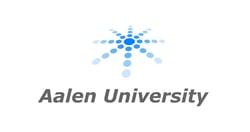High-Stakes Testing
High-stakes testing refers to exams or assessments that have significant consequences for the students, teachers, and schools involved. These tests are often used to make important decisions about students and schools, such as grade promotion, graduation, college admission, or funding.










What is high-stakes testing?
Stakeholders in high-stakes testing
Different stakeholders and their association to high-stakes testing
Students: A high-stakes test may determine if a student advances to the next grade, receives a scholarship or whether he or she receives a diploma.
Teachers: Students' test results may be used to evaluate teachers' performance, including teacher pay, teacher employment, etc.
Schools and Universities: Test results may have consequences for schools including penalties, changes to school management or even closure. There may even be an effect on a school's reputation and accreditation.
Challenges of high-stakes testing
5 challenges faced during high-stakes testing
- High-stakes tests may encourage the teachers to teach topics that are most likely to be asked in the test, thus neglecting other topics. This can be overcome by making the tests well rounded in nature instead of them focussing heavily on a few topics.
- The real objective of imparting knowledge to the students might be lost in the overlooked in an effort to maximize their test scores. To overcome this, there should be greater emphasis on other forms of testing such as quizzes.
- There might be a rise in the use of unfair means during the tests, sometimes coordinated by teachers administrators who might be looking to escape the punishments that result from poor test performance. Thus, the performance of teachers and administrators should be judged on a number of factors and not just the test scores.
- Because of strong pressure on teacher and administrators to improve test results, students from low income households may be more vulnerable to receiving instructions only to do well during the test without focussing on their overall development. Therefore, evaluations should be based on the holistic development of a student.
Solving the challenges of high-stakes assessment in a remote setting
Ways to resolve challenges of high-stakes testing
The arrival of on-screen and online high-stakes tests has been predicted for many years. There are, however, several challenges with moving high-stakes testing to a remote setting.
Academic dishonesty
One of the most challenging aspects of digital exams, especially high-stakes tests due to their importance, is ensuring that the students are not using any other resources (such as internet, books, notes, chat, etc) than determined by the conditions of the exam to assist them. Using Digiexam, the success rate of cheating is dramatically reduced due to features such as required ID verification, in-person and automated proctoring with behavioral trackers and device lockdown functionalities.
Technology requirements
Depending on the technology required for the exam, it can put students at a disadvantage. Studies have shown that students are more likely to experience problems with an exam if it’s written online. However, we wholeheartedly believe we’ve been able to create an intuitive platform, for both students and teachers, that can safely and reliably power the complete examination lifecycle. And with each generation becoming more and more technologically skilled, this challenge will soon be a thing of the past. In the end, the future is digital, no doubt about it. We believe moving education to a remote setting is a necessity to not hinder societal and educational growth.
Internet connectivity
The reliability of internet connectivity is at times a problem in rural and remote areas. As such, online high-stakes testing can prove a huge challenge for a smooth and reliable examination process. However, in comparison to a browser-based exam environment, the Digiexam application offers offline compatibility. Our platform can be trusted regardless of internet connection.
Advantages of high-stakes testing
5 advantages of high-stakes tests
- High-stakes tests ensure accountability for teachers. Teachers are motivated to work harder because they are aware that their performance will be evaluated by the performance of their students.
- Testing ensures that students are working towards an achievable goal and are motivated to work harder. Testing encourages students to continuously improve themselves to achieve their goals.
- The performance of a student during these tests helps the teachers to evaluate the areas of improvement and the students can be helped accordingly. A student will thus be aware of their strengths and weaknesses.
- The test scores provide parents, employers and colleges an understanding of the skills acquired and whether the learning objectives are being met. Thus there is a common yardstick by which the students can be evaluated.
- In conclusion, although there are many challenges that come with high-stakes testing, they can be overcome with certain modifications in our current testing methodologies. The high-stakes tests thus have a positive impact on student achievement, suggesting positive results in the long run.
Interested in knowing more?
What our customers say
As the University continues to pursue a remote assessment strategy for all courses, confidence in the systems we use to support exam integrity is vital.

Maggie Gibson Birmingham City University

Digiexam receives a lot of attention in the south of Germany since a lot of people share the belief that it will be the only product that will meet the regulatory and data privacy requirements for future online testing.

Dr. Martin Franzen Aalen University
We have students all over Sweden and abroad and they need to be able to complete their exams regardless of location. Digiexam's proctoring solution has become a key success factor for us at FEI.

Magnus Rolf Företagsekonomiska Institutet

Law Faculty at Lund University
The Law faculty at Lund University using online examination
Therese FahlströmAdministrator, Juridicum, Faculty of Law Lund University I am part of the central service organ for students and teachers here at Juridicum and have been working here for the past...
Read moreWhat to consider
Meet the platform
Let us show you how it works.
Read more
Digiexam plans and pricing
Find a pricing plan for you
Read moreEnterprise security
Academic integrity can never be compromised.
Read moreFAQ - High-stakes tests
What is the difference between low-stakes and high-stakes tests?
"Low-stakes tests” are used for measuring academic achievements, identifying learning problems, or informing instructional adjustments, among others. The difference between high-stakes and low-stakes tests is not its form (its design), but the function of the test (how the results are used). For example, if the test is used for determining if the student is ready for advancement to the next grade or not, it does not matter if the test is a multiple-choice exam, an oral exam, or an essay exam, it will still be considered a high-stakes test. Low-stakes exams usually carry no significant or public consequences. The results often only matter to an individual teacher or student.
What are the advantages and disadvantages of high-stakes testing?
The pros and cons of high-stakes testing have been weighted heavily by parents, educators, and students alike. It is both one of the most controversial and contentious issues in education today, and the technicalities of the debate are both highly complex and continuously evolving.
Proponents may argue that the practice:
- Holds teachers accountable for ensuring that their students learn what they are expected to learn.
- Motivates students to work harder, learn more, and take exams more seriously.
- Establishes higher expectations for both educators and students.
- Provides a detailed measurement of student performance, revealing areas of education that need to be improved.
Opponents may argue that the practice:
- Forces teachers to “teach to the test”.
- Promotes a narrow academic program.
- May contribute to higher rates of cheating.
- May be correlated to increased failure, lower graduation, and higher dropout rates.
- May diminish the overall quality of learning.